“Whether people like my clothes or not, they’ve become a part of my identity,” says Iman Ben Ahmed, 23. Ahmed is a Sunni Muslim and says her hijab makes her think of her mother, who made it for her.
Five London-based couples of different faiths told BuzzFeed News what they wear when they worship or pray, what this means to them, and what reactions they get from other people.
Chloe Cohen, who is Orthodox Jewish, says covering her hair is an “outward expression of my religion”, while for Devinder Kaur, who is Sikh, feels her malas or rosary beads are a practical tool for worship: “Sometimes when I'm going to work I'll have them in my pocket and I'll meditate as I'm going along.”
Some people we spoke to have been abused because of how they dress. Ahmed says she is unfairly stopped at airports while Cohen’s husband, Joseph, says he has been physically attacked.
None of our interviewees claim to represent a whole faith – each has made choices that reflect their personal beliefs – but all said their outward clothing reflects their spirituality. Even Ben Virgo, an evangelical Christian who doesn’t wear specific clothes when he prays, says he dresses “in such a way that pleases my wife”, which he considers an expression of the Christian belief that husbands should “love their wives like Christ loved the church”.
Devinder Kaur, 43, Ilford, east London
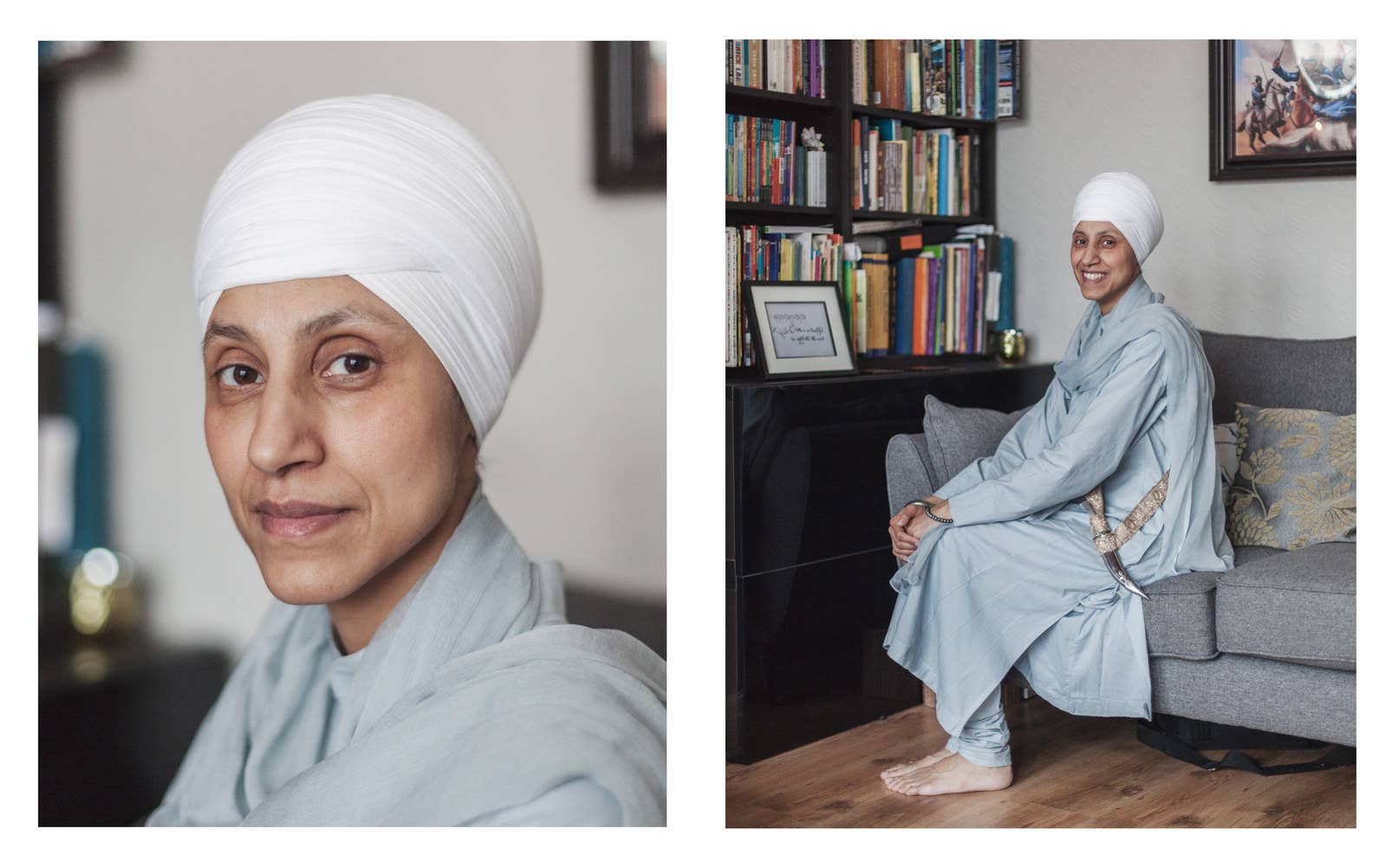
Devinder Kaur is a Sikh who has taken the Amrit baptism, a Sikh ceremony that initiates people into the faith. She lives with her husband, Mankamal, and worships twice a week at their gurdwara, a Sikh place of worship. Kaur says Friday evening is her favourite time to pray, because it gives “time to reflect and gets your balance right for whatever has happened in the week”.
Kaur is dressed in the clothing style known as bana, the traditional spiritual dress for Sikhs who have been baptised. Her outfit includes a pajama (loose fitting top and trousers), a chunni (a long scarf), a dastar (a turban), a kirpan (a small sword, symbolising the fight against injustice and religious oppression), a kara (a metal bracelet, symbolising, among other things, infinity, time, restraint and remembrance of god), shingaar (an accessory representing an animal’s tooth, historically worn by warriors), and malas (prayer beads).
“I have a pajama on, which I think originates from the same source as pyjamas,” she says. “I love it because it has pockets, so it's extremely practical.
"If I go to the gurdwara then I’ll always be covered modestly and I tend to wear something long because we have to sit down and bend. [The pajama] means I’m fully covered – people should always look at you in a modest way, so that's why I’d always wear something long.
“I'm always wearing a chunni, which I would use to cover my head when I'm at the gurdwara.
“I also wear a kirpan … This one is Mankamal's grandmother's. It's 40 years old and has been passed down through the family.
“I've also got my kara on; sometimes I wear two. It's made of iron. I don't like calling it a bangle because to me a bangle is something quite decorative and ornamental. A kara is not for that purpose at all. They're worn on your wrists as there are many good things and bad things you can do with your hands. You can use your hands to shake someone's hand, give someone a hug, write a lovely letter to someone, but you can also use your hands in a hurtful or harmful way. The kara is there as a visual reminder to tell you what you should and shouldn't be doing.
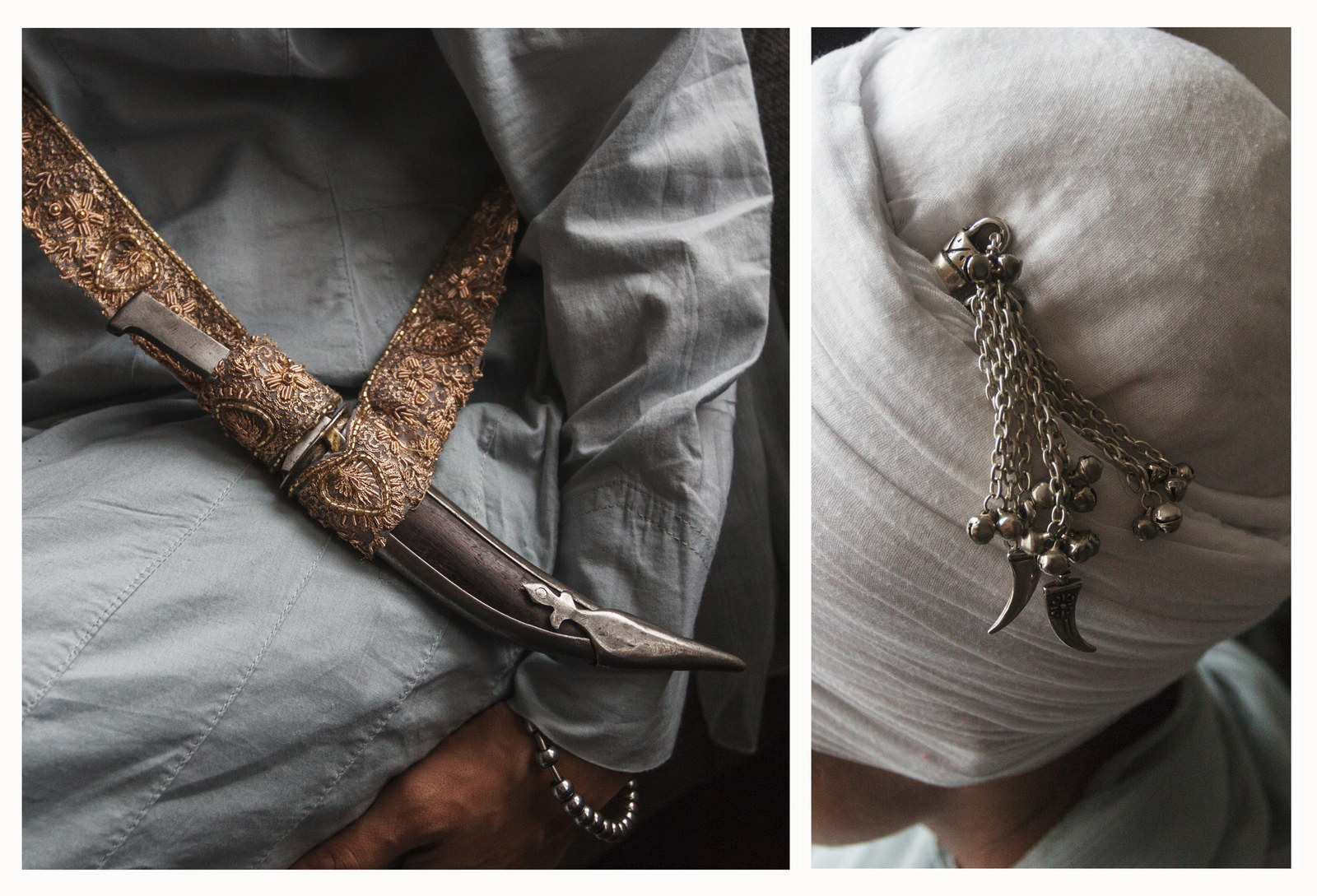
"These are my malas, or rosary beads. They're great, really practical. Sometimes when I'm going to work I'll have them in my pocket and I'll meditate as I'm going along. Although they appear to be decorative, they are more like tools; I like to call them tools because they're very purposeful.
"My shingaar is decorative though. My sister-in-law made it for me and it even has little kirpans on it.
“My dastar is probably the most important thing to me. Mankamal became a practising Sikh 12 years ago, and I became one seven years ago. It took me a while to actually understand the values of Sikhism, despite being born into a Sikh family.
“I think because I’ve been wearing my dastar for seven years it's something I often take for granted, and everyone around here knows me now, so I don't often get strange looks for it being unusual. Female Sikhs don't often wear the dastar. I quite like it when people ask me, 'I thought it was only Sikh men who wear the turban?' When I decided to take the Amrit baptism, I decided that I would wear the dastar, because I’m a practical girl. The hair needs to be covered anyway, and this would keep my hair away, [so] it worked for me. Also I chose it because of what it represents to me – about how it is there to spread equality between classes and women. Because Sikhism is all based around equality, there are no separate rules between men and women. [My dastar is] an outward projection of my inner values.”
Mankamal Singh, 43, Ilford
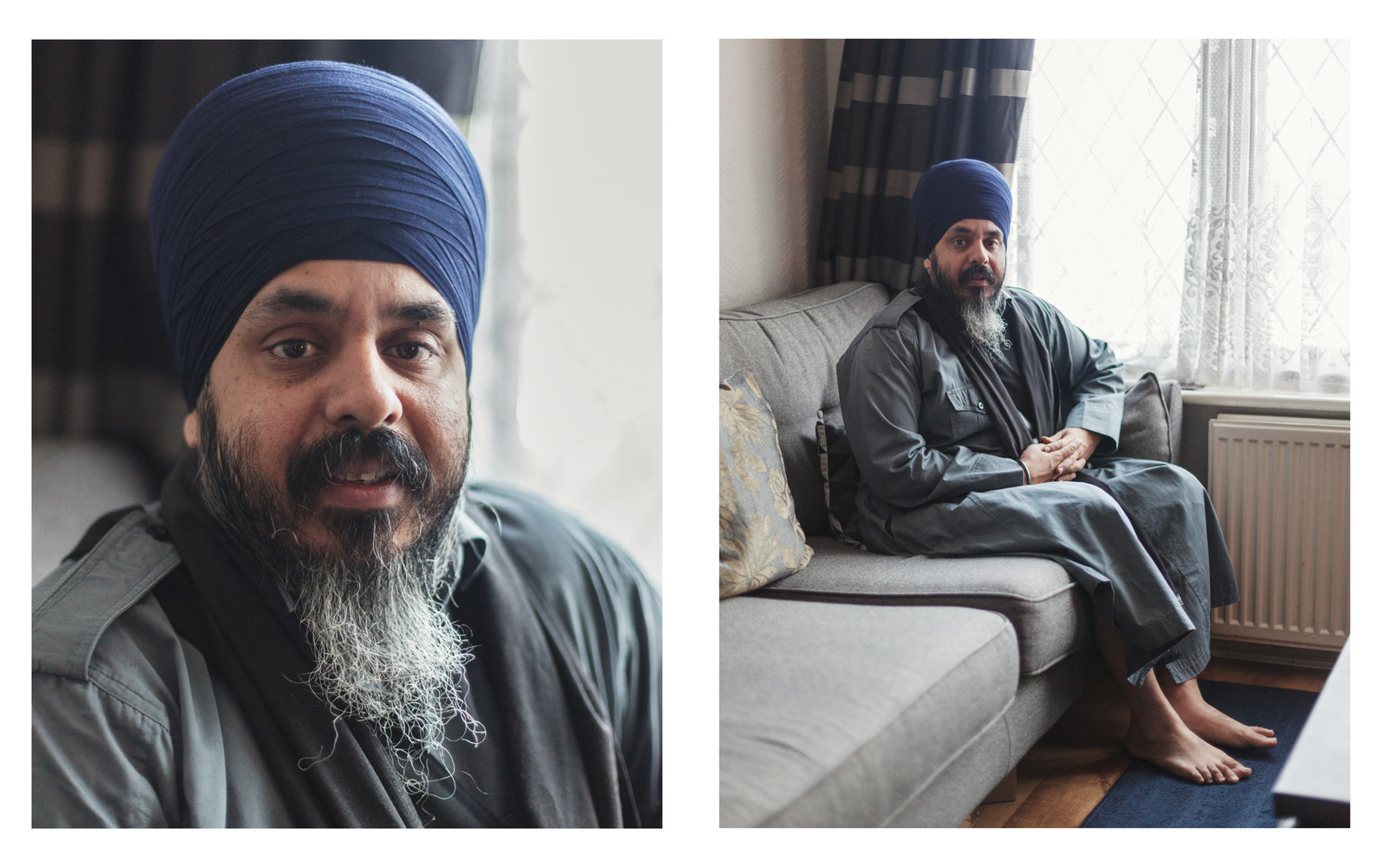
Mankamal Singh is married to Devinder Kaur, and calls himself an Orthodox Sikh. He has also taken the Amrit baptism. He says prayer is part of their daily lives: “We rise early in the morning … and start our prayers around 5 o'clock in the morning. We bathe, wash ourselves, and get ready … Then we pray again in the evening.
“I often end up doing my prayers on the train on the way home – I often get stuck on the commute so I take the time to recite my prayers then. My wife often does hers in the kitchen. With busy lives, you end up trying to fit your prayers in wherever you can.”
Singh is also dressed in bana, with a kirpan (sword). His clothes and accessories, like those of his wife, make up what are known as the “five K’s” of a baptised Sikh, which he says are: “The kirpan; a steel bangle known as the kara; the undergarment which is worn for modest reasons known as the kachera; the kangha, which is a wooden comb used to wind my uncut hair up under my turban; and then finally my uncut hair, which is known as the kesh.”
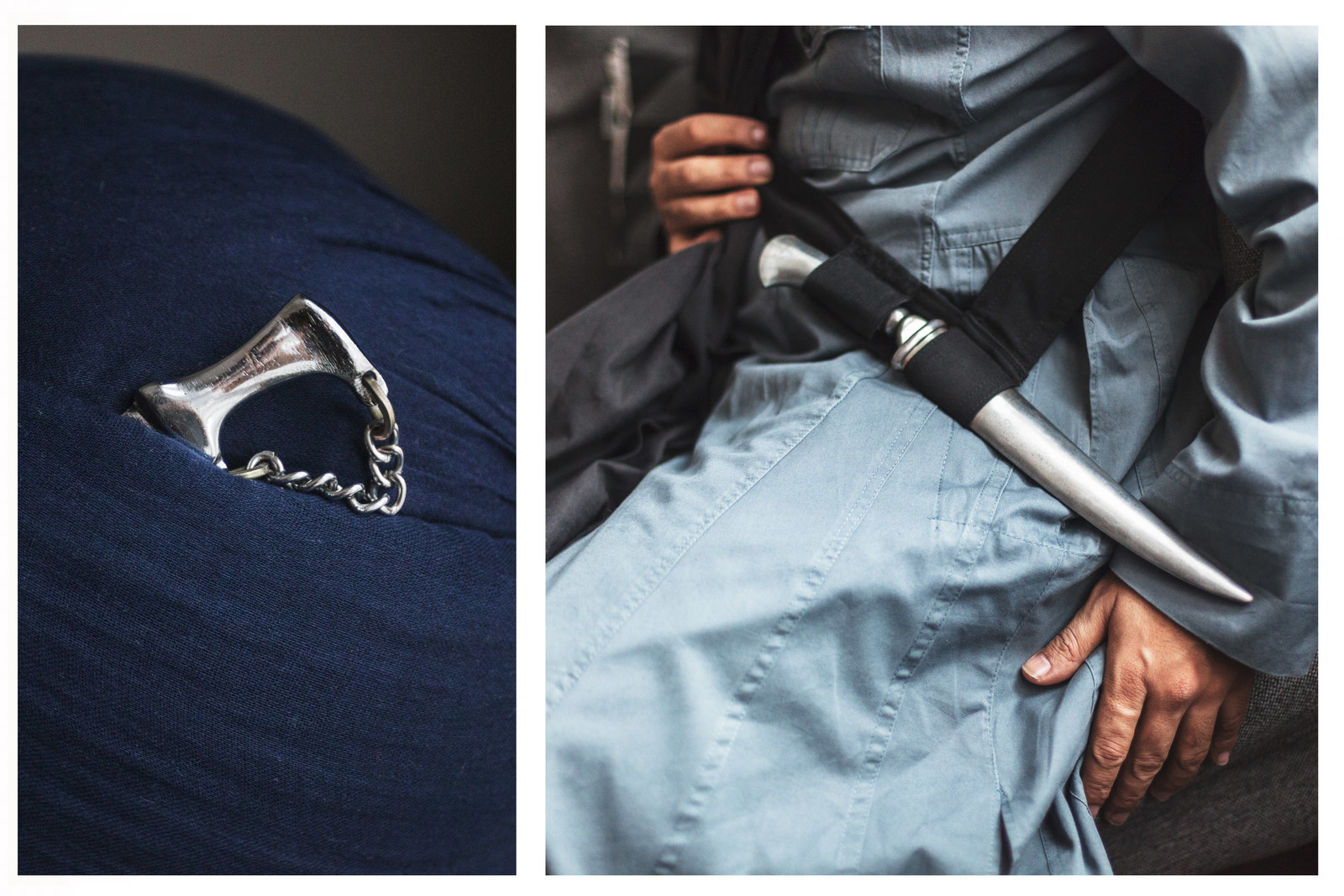
Singh says: “The kesh is probably the most symbolic sign of a Sikh, especially a male Sikh. This would be respectfully wrapped and tied in a turban, which we call the dastar.
“The dastar is worn as a symbol of nobility [and] equality amongst all Sikhs, and it's also practical in that it looks after your hair. It emulates and projects what we represent.
“This used to only be worn by aristocrats in India, or by people of high status. One of the things the Sikh gurus did was to uplift the working classes spiritually, mentally, and socially. The turban acted as a tool to help this: The gurus encouraged the working classes to wear the turban when they otherwise wouldn't have been allowed, so that they could be seen as just important as everyone else.
“These are the challenges that Sikhism brought about to shake up the system and move away from the complacency of a caste system where people were categorised and labelled. Sikhism helped people move away from the lifestyles that society had previously prescribed them to.”
Iman Ben Ahmed, 23, Harringay, north London
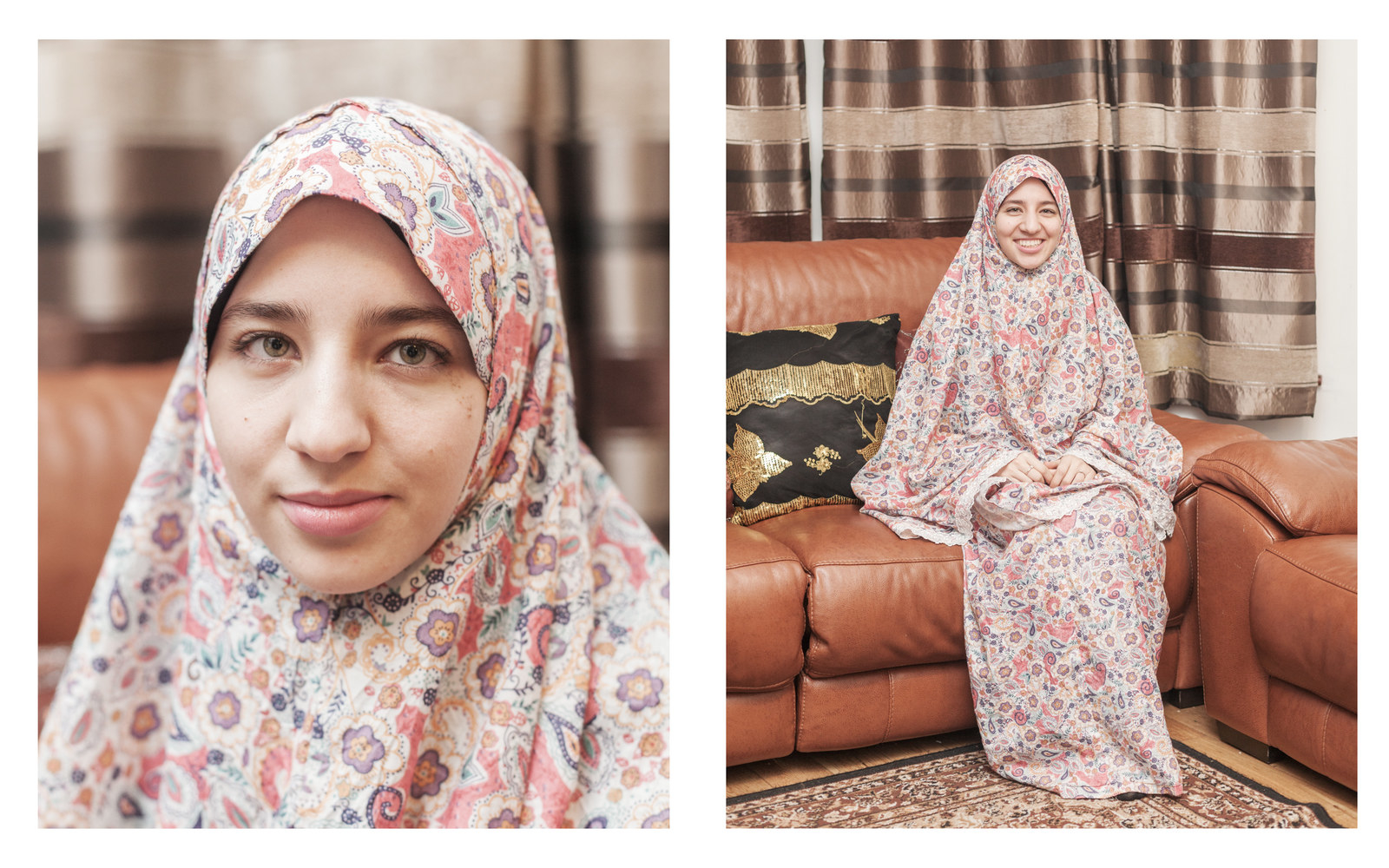
Iman Ben Ahmed is a Sunni Muslim who lives in Harringay with her husband, Ismail. She says she prays at least five times a day, starting at 7am. She worships pretty much anywhere, from a coffee shop to a room at work. “I pray everywhere I go. Everywhere is a good place,” she says.
Ahmed is photographed wearing a pink floral long skirt and a hijab, which her mother made for her. “Every time I wear it I think of her,” says Ahmed, who is of Tunisian heritage. She has received a lot of similar clothes as gifts, some from when she has been on pilgrimage. When she is not at home, though, she usually prays in more casual clothes: “So if I’m outside university, for example, or generally just out and about, then [I pray in] the clothes I’m wearing that day. So a skirt and shirt, trousers, just generic clothes.
“The hijab, the head covering, is significant for modesty, but more than anything these clothes are a source of identity. So there is the religious aspect but there's also the personal one, my own prayers between me and God. I like wearing it and being identified by it.”
Ahmed doesn't feel like she is treated differently in public for wearing hijab – except at airports. “As someone who travels very frequently I find the treatment that I receive by airport security to be anxiety-provoking and unfair. And it genuinely affects my wellbeing before, during, and after my travel.” Just two weeks before speaking to BuzzFeed News, she says, she was chased by security staff at an airport in Rome, and “rudely” asked to take her hijab off, after she had cleared the security checks. “I am happy to say that I stood my ground to the end and didn’t take it off,” she says.
“But that experience was psychologically distressing and stayed with me for a while. This was a simple example of a recurring theme of abuse that Muslim women who wear the hijab share for no reason other than choosing to practise their faith and exercising a personal choice.
“Whether people like my clothes or not, they’ve become a part of my identity. I wear them with pride as it is a part of who I am. I don't think that I am a representation of my faith, though; I'm just a human being like everyone else and I try my best to practise my religion and portray the best image, but sometimes that's not always possible. The whole point is that when I do wear them, they’re a reminder.”
Ismail Jeilani, 23, Harringay
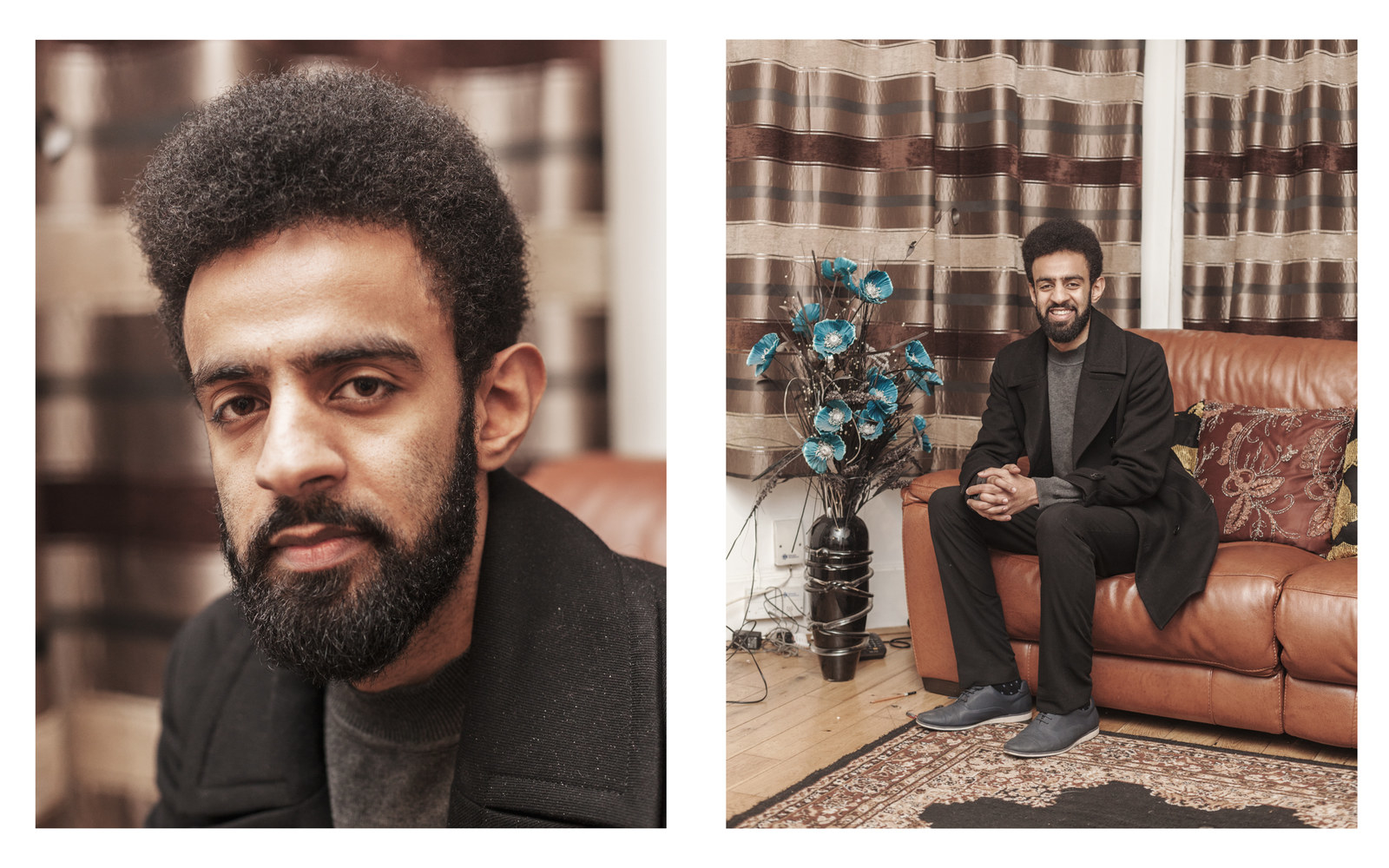
Ismail Jeilani is married to Iman, and is also Sunni Muslim. He describes himself as Bravanese - meaning he is part of the ethnic group originating in the town of Barawa, Somalia. He is seen here wearing the sort of clothing he would wear when praying: a black jacket, a turtleneck top, and trousers. He prays five times a day but says: “If you define worship as the concept of being aware of God, then the ideal case is that it's meant to be with everything you do, because everything with the right intentions can be considered worship. So working every day to provide for your family can be worship, if you intend it to be.”
He says that the requirements of his religion are that he must cover up a certain proportion of his body, which he considers to be from his navel to his knee, and to dress in a respectable manner with clothes that are clean.
He sometimes wears a robe, a simple long garment that some men wear for modesty. “But I didn't see this as something necessarily of religious significance; it was culturally the thing to wear out of respect when you came to the religion.” He found he wore the robe more often in the past, such as when he taught at as Islamic school, but wears it less today.
“The idea is that there's a minimal requirement around what you wear, but a lot of emphasis around the state that you're in whilst you pray,” he says. “So the emphasis isn't in the quality of the material or the price of the material, because it's meant to be open to anybody – rich or poor. It's what's inside that holds the significance.”
He feels his clothing allows him to “blend in” in public more than his wife’s, and that London is a tolerant place because there is so much diversity in thought, religion, and ethnicity. Outside of this bubble, though, things aren’t the same: “When I went to Paris, Muslims would tell me to be very careful with how much ‘Islam’ I show. It’s an unfortunate reality.”
Rachel Virgo, 45, Bethnal Green, east London
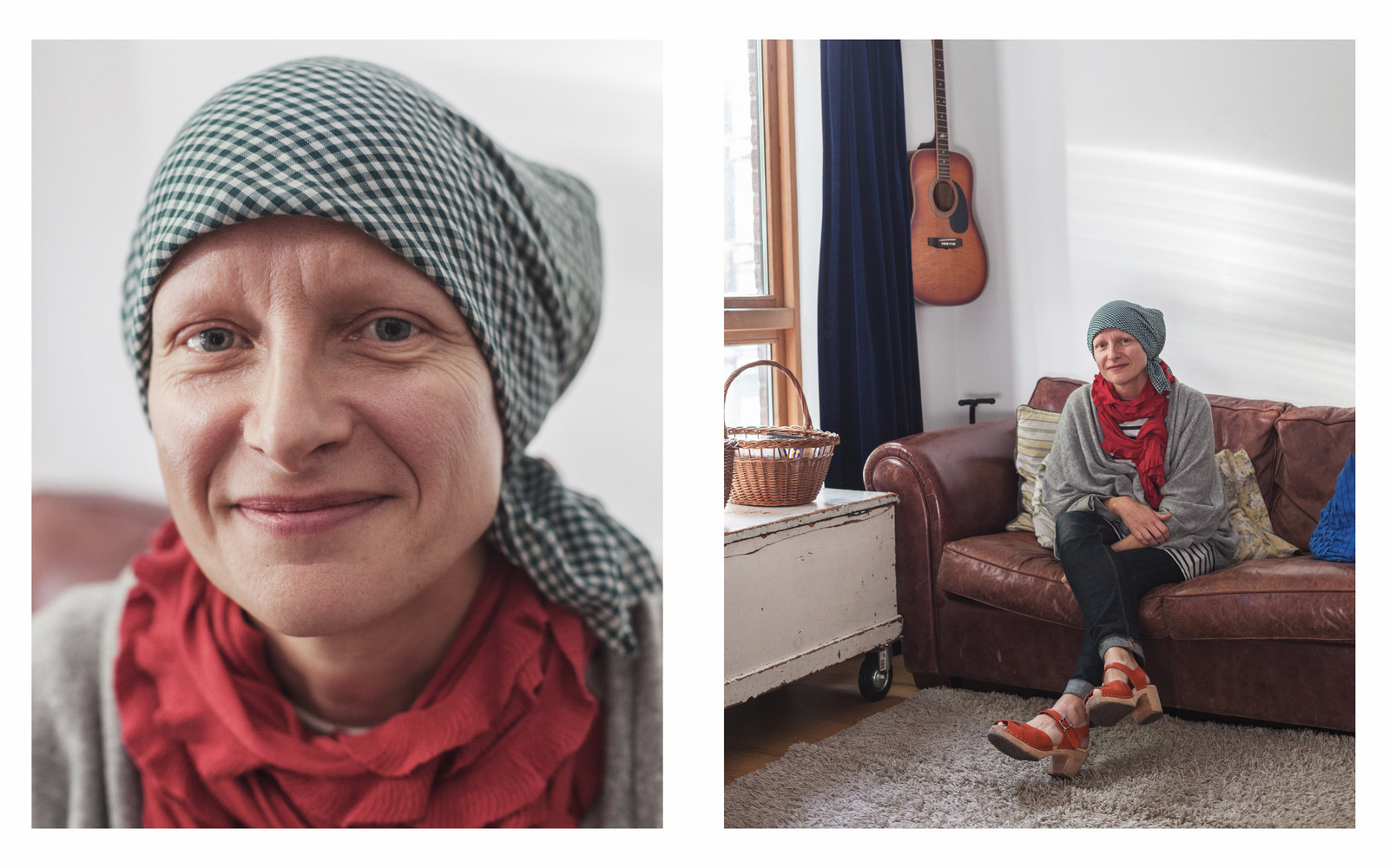
Rachel Virgo is an evangelical Christian and lives with her husband, Ben. They worship together in their house every Sunday in the same clothes that they would normally wear throughout the week. “I think worshipping on a Sunday is an expression of worshipping all week,” she explains. “In my wardrobe there are very few expensive items. I tend to shop at charity shops and jumble sales. So even for worship on a Sunday, I wouldn't expect to have to wear anything expensive.
“I was saying to Ben that we should put on some fancy-dress outfits for today’s photo shoot, to spice things up a bit. I could get a wetsuit out and some flippers, or something to make it more exciting… we just wear what we want.”
Her shoes, for example, were given to her by her husband: “In all of the 21 years we have been married, I think we have found three pairs of shoes that we both like.”
“I think that the wonderful thing about God is that he's not removed from us, but he has come himself to the world,” she explains of her beliefs. “And he speaks for himself as a father. I like to think that I can wear what I want to wear to be with my father. Although I don't think my earthly father would have taken much notice of what I wore, as long as it was decent.”
Ben Virgo, 45, Bethnal Green
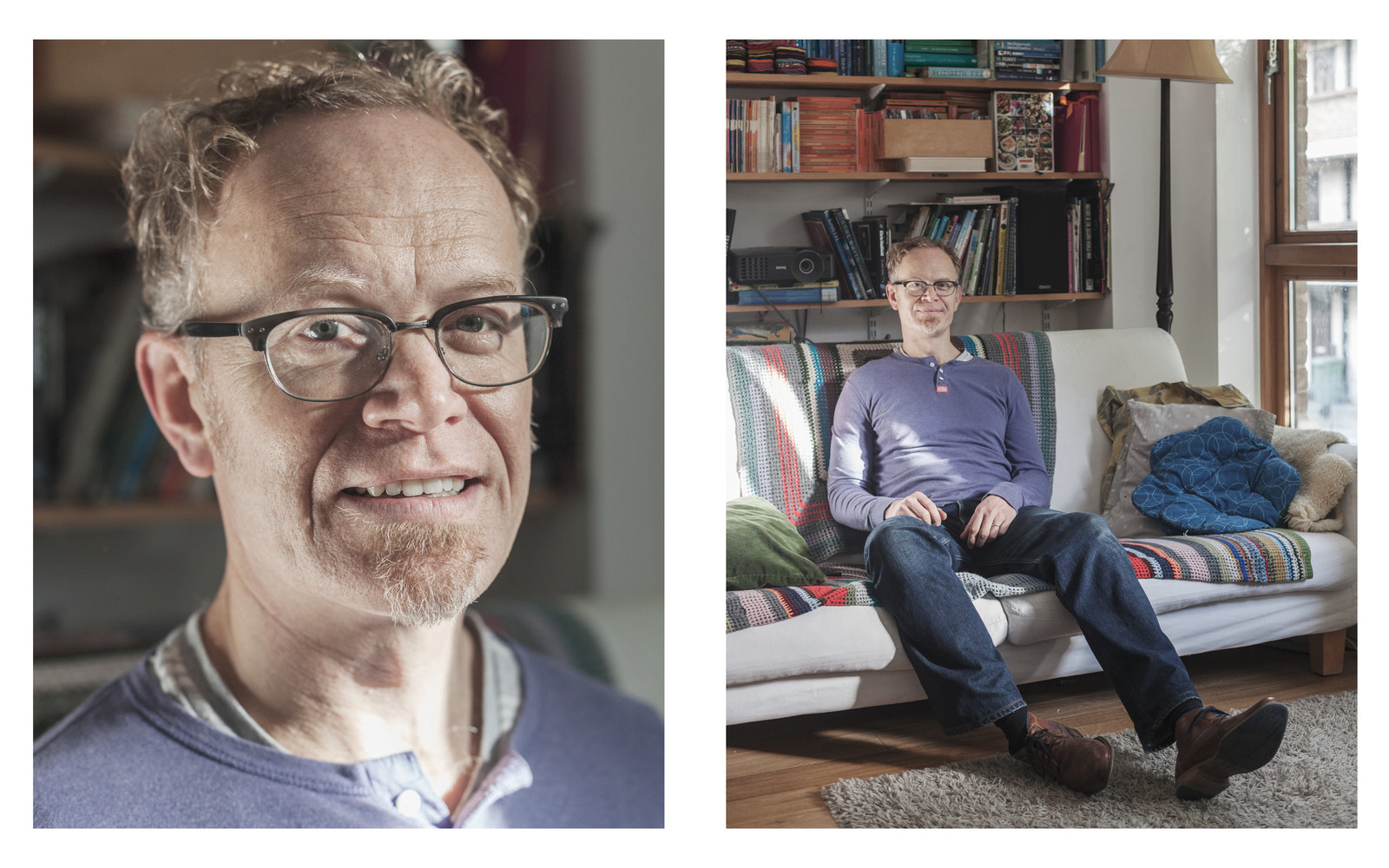
Like his wife Rachel, Ben Virgo is an evangelical Christian. They worship together in their house every Sunday, and on Wednesday evenings they invite people of other faiths from the estate around their home to pray with them. The majority of people in their area are Muslim. “We believe in things which Muslims do not believe,” Ben says. “Islam has been set up on the basis that God is not three, whereas we believe God is three persons.”
He is photographed wearing his regular clothes. “I would wear the same clothes [to pray] as I would wear throughout the week and what I would choose to wear at the weekend.
“While it could look disappointing that we don't wear anything specific to worship in … I would say that the issue that is central to this is that I dress in such a way that pleases my wife. The Bible teaches husbands to love their wives like Christ loved the church. For example, I’m trying to decide which glasses I’m going to get – I would ask my wife because she has to see them. I just have to see through them.
“So that is significant to the whole question of worship because the way a Christian understands the gospel absolutely permeates everything. So I think of my wife before I dress. It is part of worship. Everything the Christian does is part of worship.”
Virgo feels that his clothing marks him out as different in the majority-Muslim community where he lives. “Encountering other parents walking to school, eye contact is denied, good-mornings ignored and handshakes refused. No one has said that this is due to my clothing, but it’s my clothing that most conspicuously makes me stand out.”
Chloe Cohen, 29, Brent Cross, north London
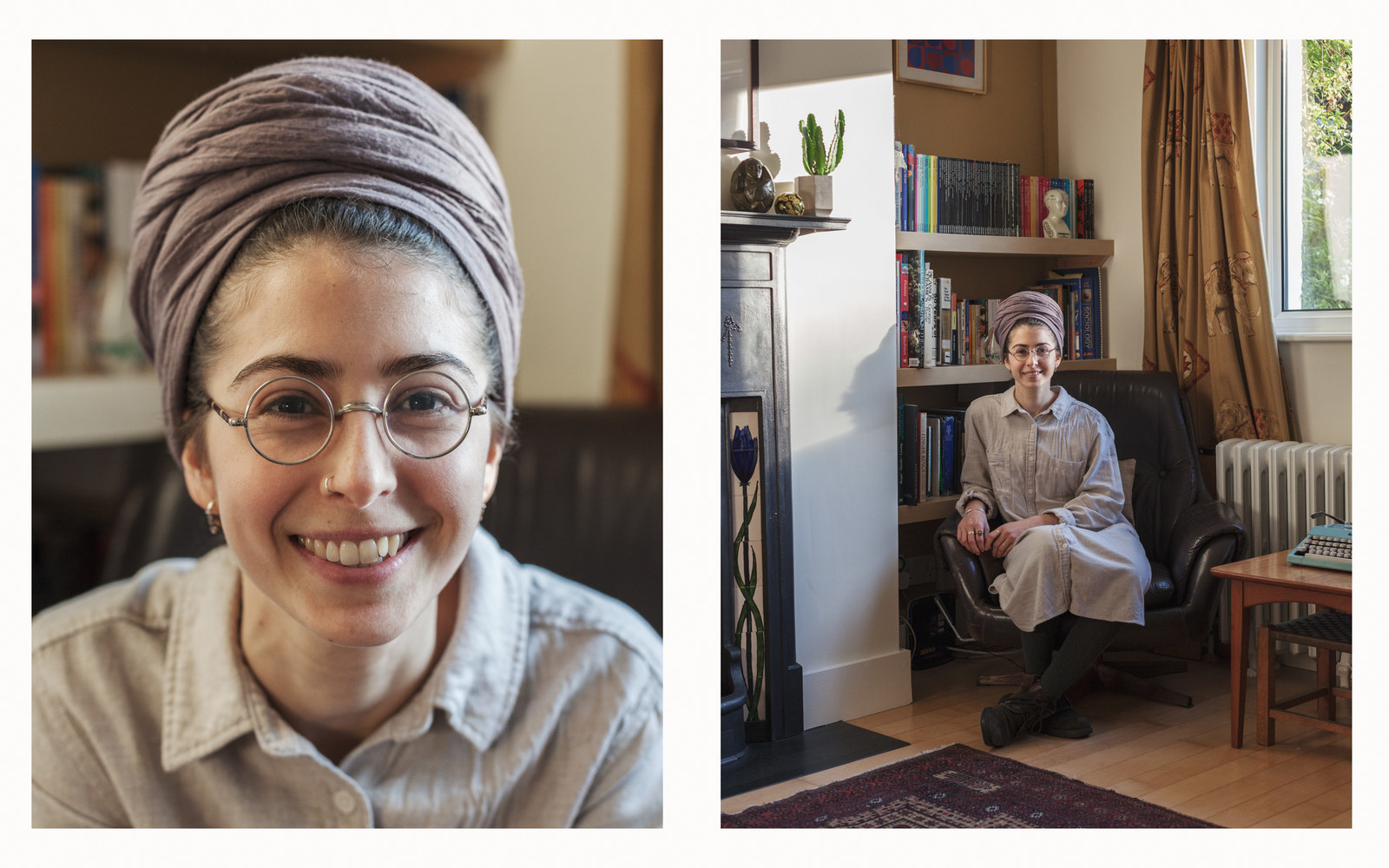
Chloe Cohen lives in Brent Cross and describes herself as an Orthodox Jew – but adds that she doesn't find categorising her religion useful: “When you're put in these boxes you find that they're not very helpful – they don't help you reach a deeper level of understanding about yourself and your beliefs.”
Cohen is pictured wearing a headscarf. “Married women in Judaism cover their hair – both men and women cover their hair when they pray. I'm wearing a turban-style headscarf called a tichel, which would be considered modest clothing.
“I actually enjoy covering my hair – although it took some getting used to it, as I didn't grow up religious. For me it symbolises being a married woman, and similar to the tzitzit [tassles attached to a prayer shawl] that the men wear it's a reminder for me of my faith. It's an outward expression of my religion.”
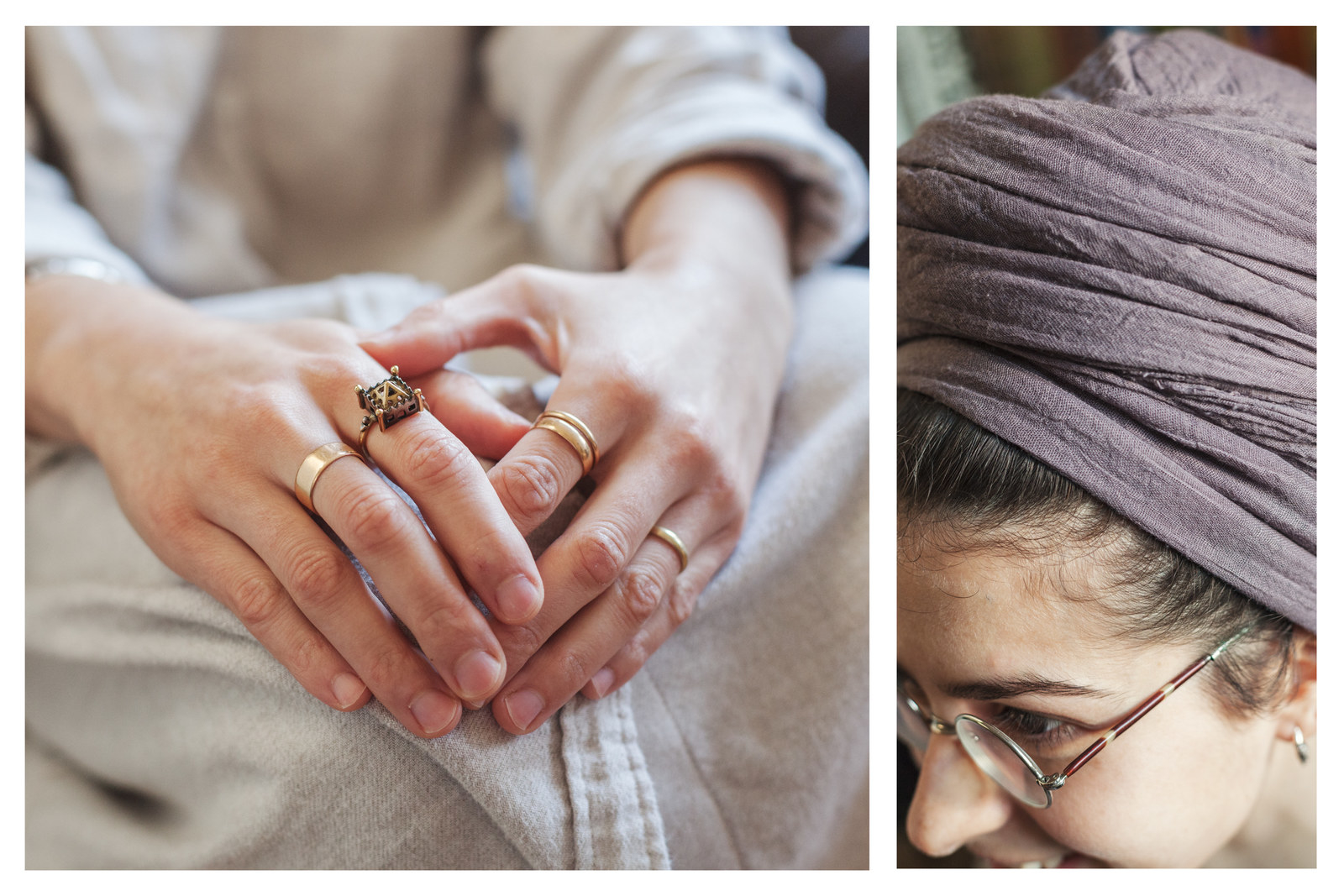
She also wears a ring that she made, based on antique Jewish wedding rings that were common in the Middle Ages in Europe. The ring features an ornate building, symbolising the temple in Jerusalem that was destroyed by the Romans, as well as the couple’s marital home. Cohen says it helps her focus her thoughts when praying.
She has a nose piercing that she got when she was 19, and says it’s usual for religious Jews to have piercings. “It's not actually forbidden or considered harming yourself. It's just not that common within religious orthodox communities. There are actually sources in the Torah about women having nose piercings, although it's not [adopted] as a tradition.”
Joseph Cohen, 34, Brent Cross
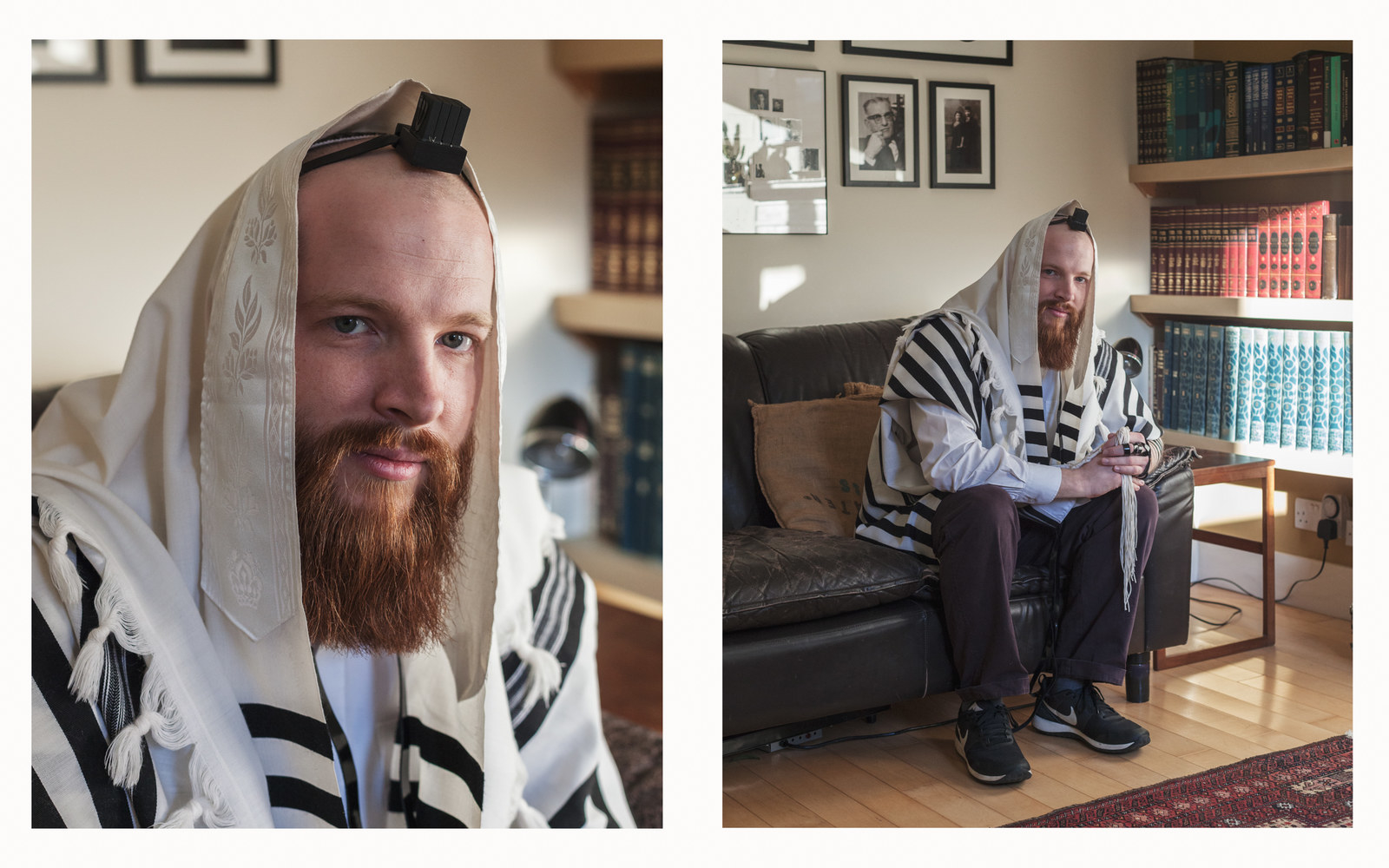
Joseph Cohen, married to Chloe, calls himself a Torah-observant Jew, meaning he follows the commandments in the Jewish scripture. He worships three times a day at local synagogues and in his house. He is wearing a tallit gadol (a prayer shawl) with tzitzit (long knotted strings or tassels), and tefillin (a leather box with straps attached to it) on his head and arm. “The manufacturing process [of a tefillin] is incredible,” he says. “They press the leather into amazing shapes. In the boxes are parchments of Jewish law from the Torah. So things like ‘the unity of God’ are in there.
“We're commanded in the Torah to bind them to our arm and between our eyes. It used to be that Jews would wear them all day long, but in our generation we wear them only when we pray. In Jerusalem it is still common to wear them all day, for people engaged in the study of the Torah.
“I follow quite a strict form of Judaism and it's commanded in the Talmud – which is the oral tradition of the Jewish people – that tefillin should be made out of certain materials, written on a certain type of parchment with a certain type of ink. So we sourced a scribe in Jerusalem and we watched him complete the writing of the parchments. He then rolled them up in a particular way before putting them in the boxes. It was an incredible experience. The type of tefillin I have are very, very rare.”
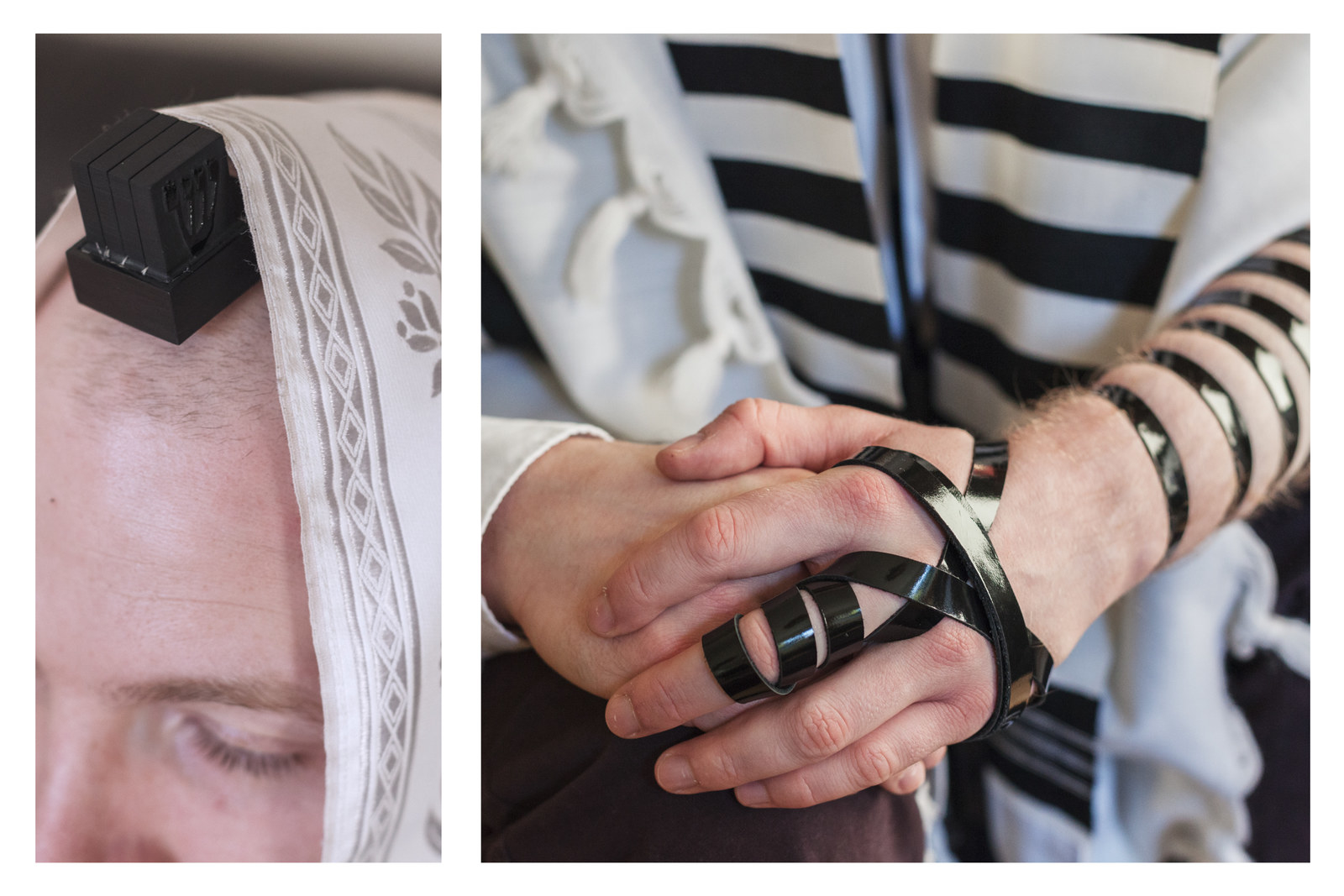
Joseph is also wearing a kippah (a brimless cap) on his head. When he’s not praying, he says he will wear “normal clothes, Nikes, etc”. None of his religious clothes have been passed down to him through family, but he says they have a lot of personal meaning: “The tallit gadol is traditionally bought by the wife or bride when she marries her husband. So my wife and I got married in Jerusalem and the shawl we wrapped ourselves in was a gift from my wife. And so every time I wrap myself in my shawl to pray, it's the same shawl that we wrapped ourselves in under the chuppah, which is a religious canopy that Jews get married under.”
He says it is “very rare” for him to be abused for wearing traditional Jewish clothing.
“Britain is one of the most tolerant and accepting nations in the world; we have a strong tradition of liberalism and fighting intolerance. However, I doubt there is a Jew in the UK that has not received abuse at some point in their life – if they look identifiably Jewish. Unfortunately for me this at times has resulted in violence.”
He says he has been physically attacked on several occasions and one man smashed his phone in a park and shouted anti-Semitic tropes at him when he saw him talking to a Muslim couple.
“Disturbingly, in 2016, the CST [Community Security Trust], a body which monitors anti-Semitism, recorded the highest ever number of anti-Semitic incidents,” Cohen told BuzzFeed News.
“The far-right seems to have switched its focus from anti-Semitism to Islamophobia. Consequently since I started dressing as an Orthodox Jew I haven’t once been abused by a white nationalist. Fifty years ago this would not be the case.”
Vijay Hirani, 50, Edgware, north London
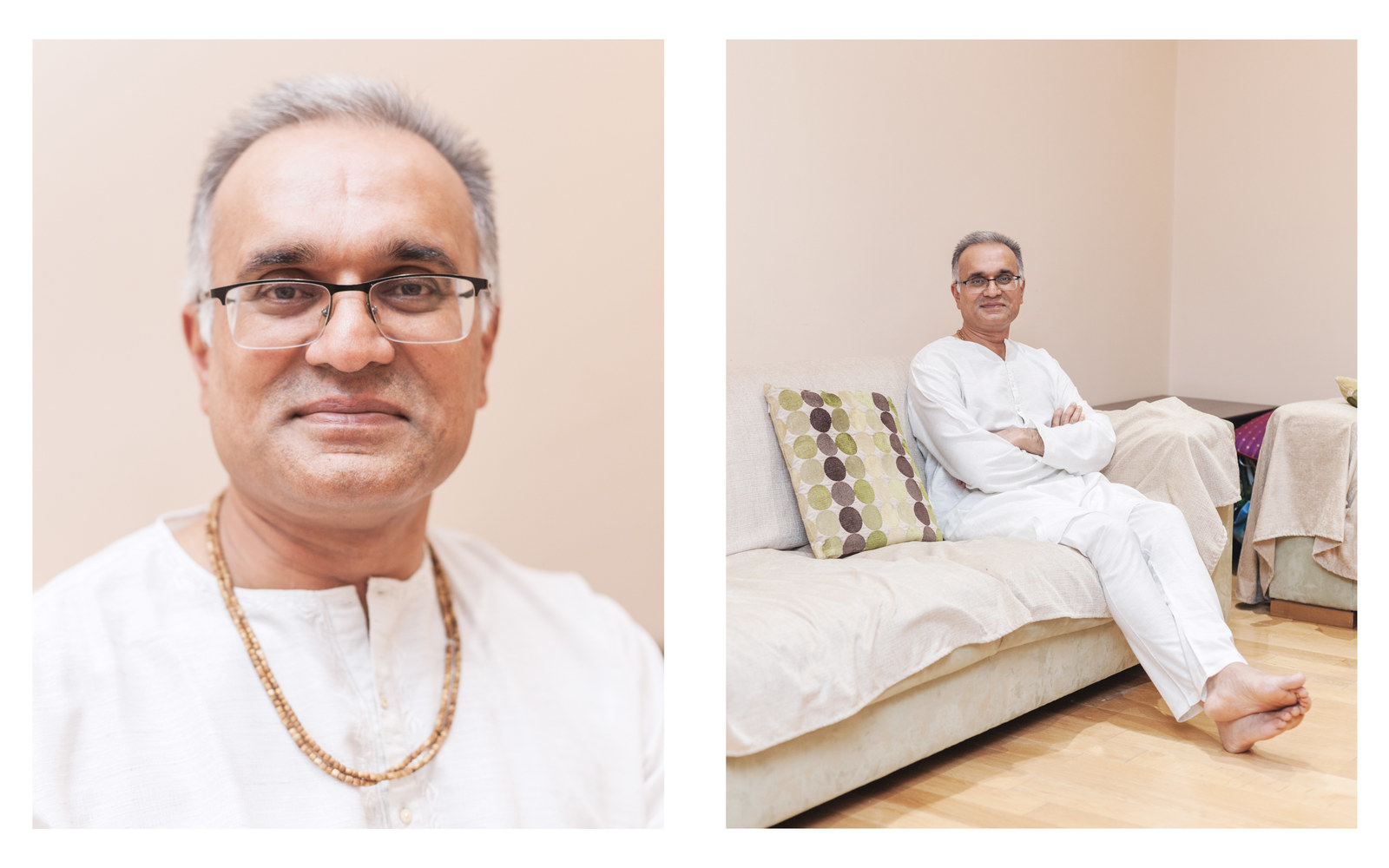
Vijay Hirani is Hindu and lives in Edgware. He attends a temple near his home every Sunday and worships every morning at home, often meditating. He says there are no rules on dress code at the temple he visits: “People tend to wear something simple and plain, just something nice – but quite often when it's a special occasion in the temple, they will have a colour code. The temple will actually [sell and] give you a subsidised price on your dress. Everybody wears it and it shows unity. Most men just wear simple and basic trousers and shirts.”
Hirani is photographed wearing a kurta – a loose, collarless shirt. He says that simplicity is key, “because when you meet God, you want simplicity… Of course on some occasions, like when people are getting married, then the dress can be more decorative. But when you pray you want to show humility and simplicity. Men don't tend to wear jewellery or anything like that.”

He says he has never been discriminated against for wearing “Indian” clothes, and points out: “Even when people of other faiths attend Indian functions they tend to wear Indian clothes.”
The necklace he is wearing has a special significance in the branch of Hinduism that he follows. Everyone in the Swaminarayan faith has it, he says. “It signifies man and God … [the knot in the middle] shows that we are eternally bound with God. It shows that you are divine.”
Kanta Hirani, 43, Edgware
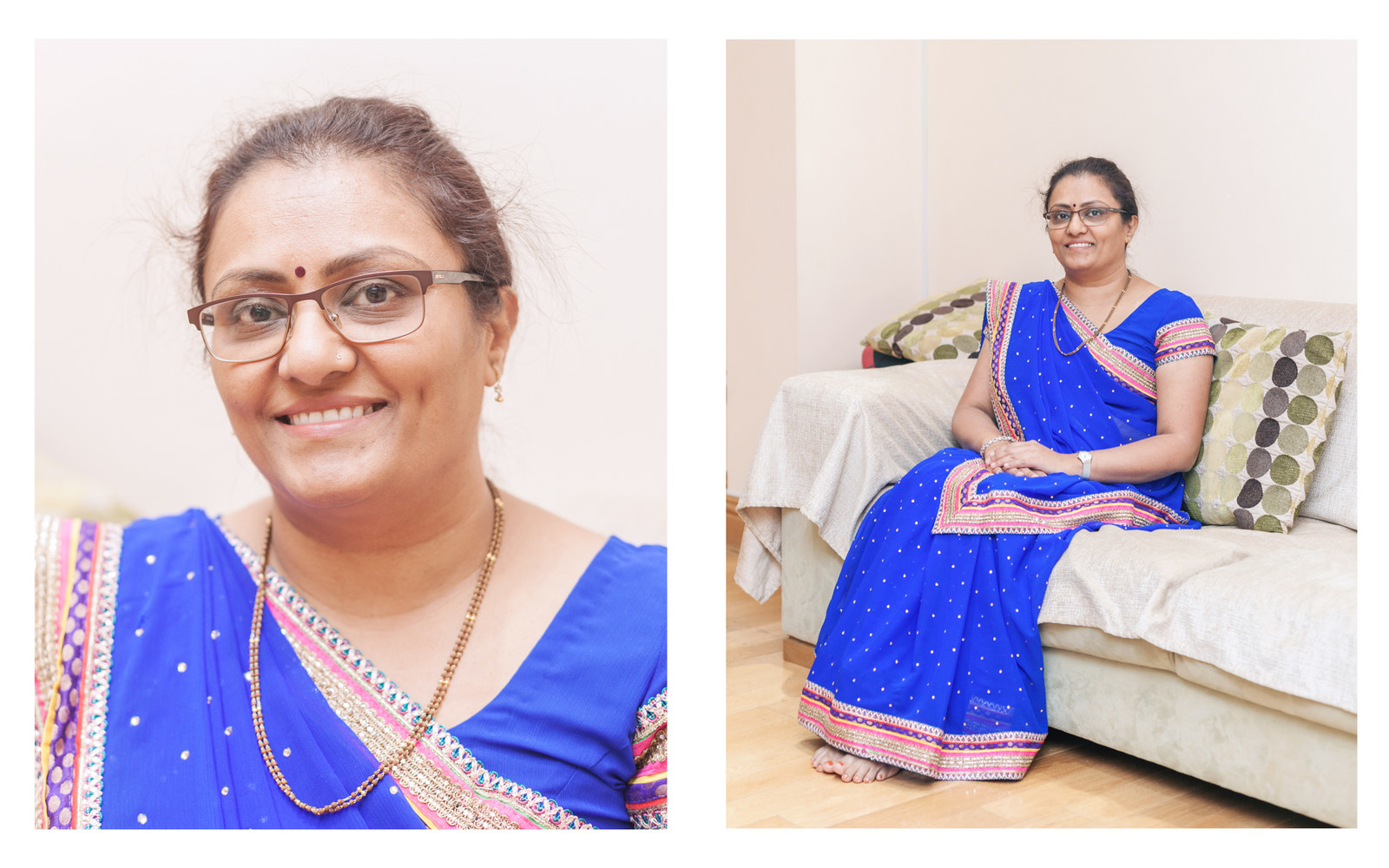
Kanta Hirani is also from the Swaminarayan denomination of Hinduism. She worships every day, including five minutes each morning with her husband, Vijay, and she goes to her local temple every Sunday with 800 to 900 other people. She uses rosary beads to chant and reads daily verses from the Vedic texts, the oldest scriptures of Hinduism.
She wears a bindi – a small red dot in the centre of the forehead – which she says all married women of her faith wear.
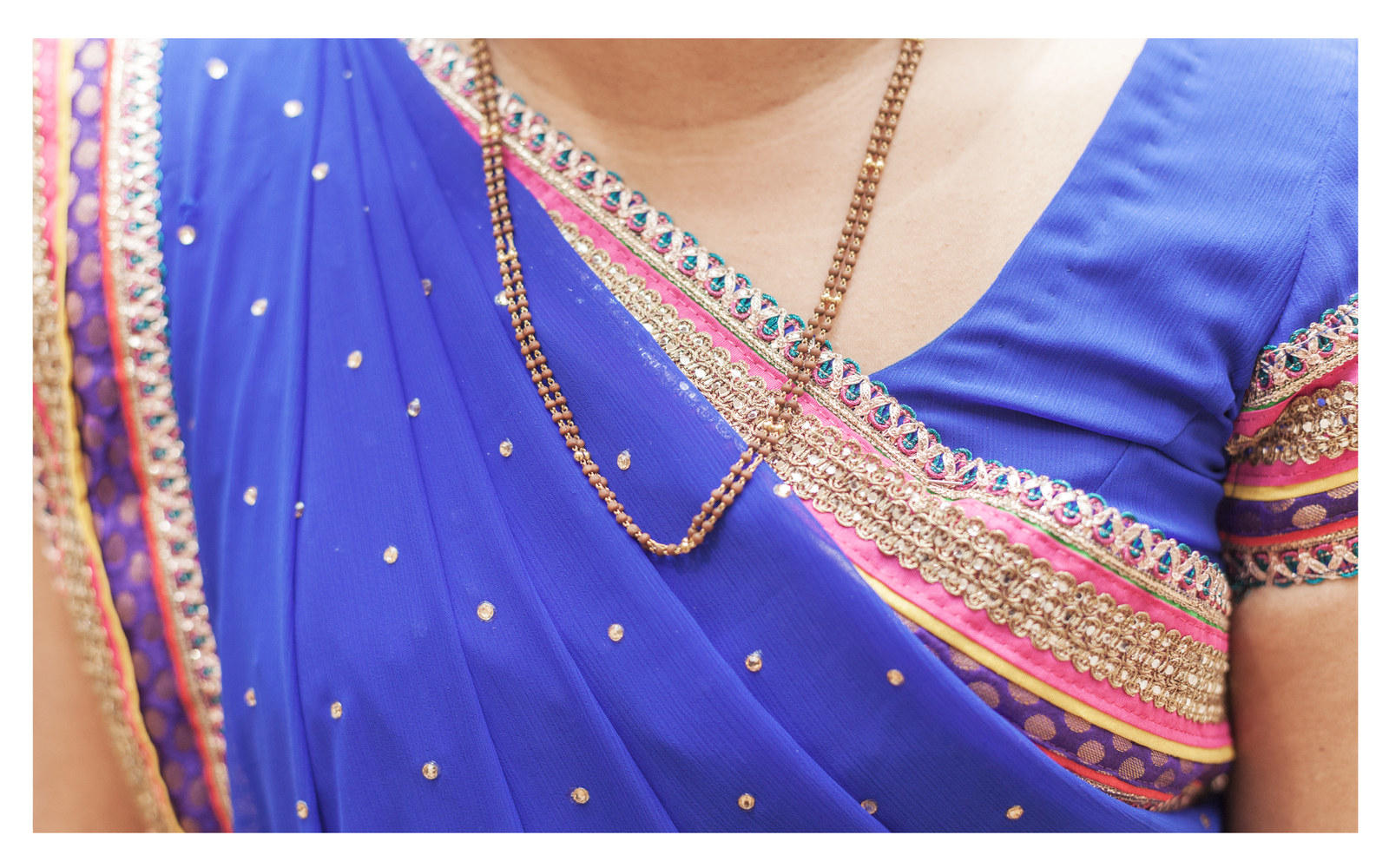
Kanta dresses in a sari when visiting the temple. “People wear very different styles of sari,” she says, “but it doesn't seem to symbolise much religiously. It's just traditional wear, worn for modest purposes.” She says that young girls wear a Punjabi dress, which covers the full body. She has many different saris, including the one she got married in.
